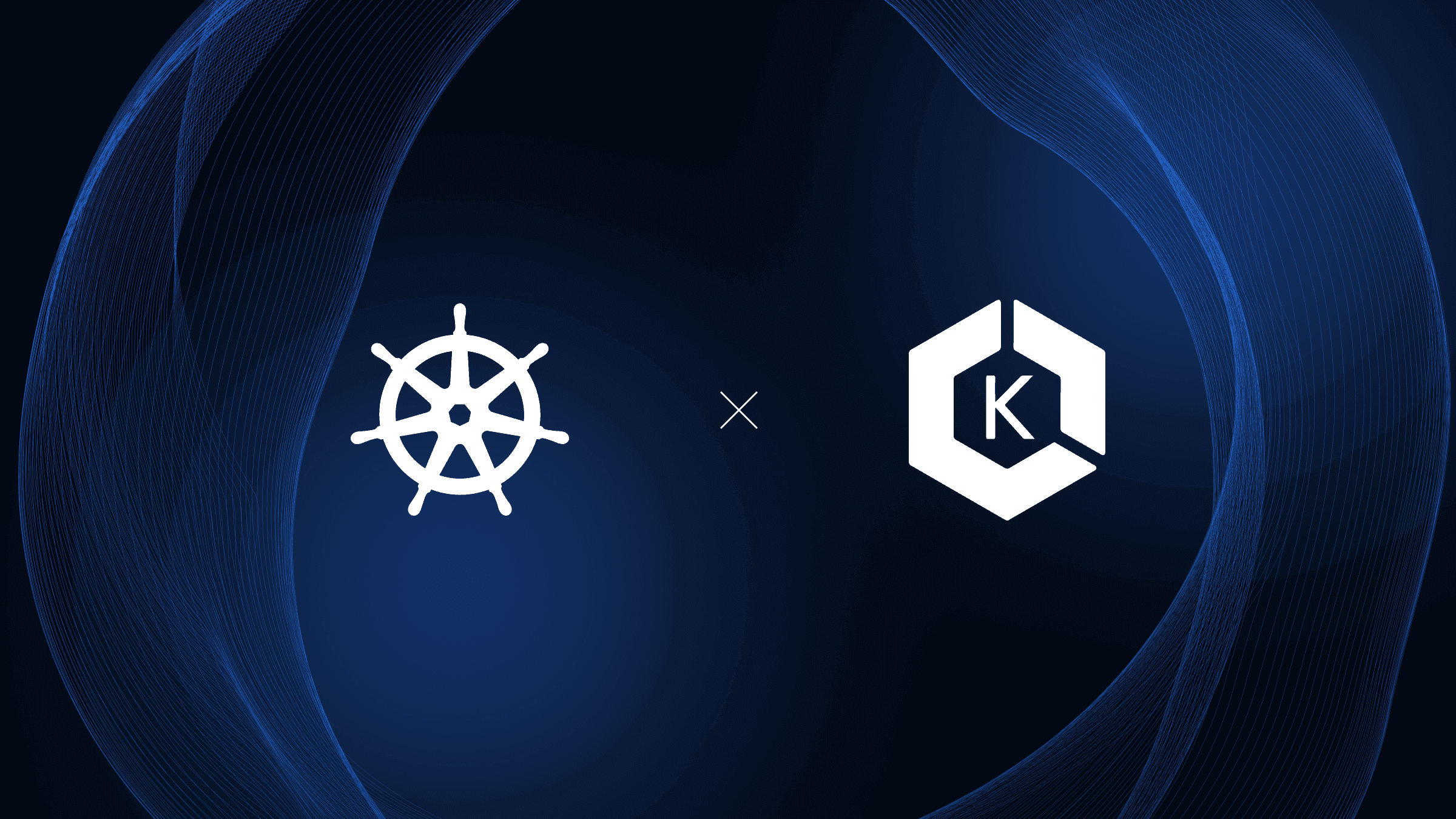If you’re here reading this article, you’re probably just starting to containerize your applications or scaling them up to meet enterprise demands. No matter the reason, you should bear in mind that selecting how to run Kubernetes matters a lot. Even though Amazon EKS and self-managed Kubernetes both promise flexible and container-based deployments on the surface, the experience you get differs significantly. Are you wondering why? We’re going to explore all the key points in this article.
Ready? Then buckle up and let’s break down what makes Kubernetes powerful in the first place! Also, you’ll find out more about the two approaches and compare Amazon EKS with self-managed Kubernetes.
Kubernetes: Definition And Application

First things first, let’s find out what Kubernetes is and why it is used. It is often shortened to “K8s”. Kubernetes is an open-source platform. Why is it used? Everything that any digital product requires - automating the deployment, scaling, and managing of containerized applications.
A great way to understand it is to compare Kubernetes to an orchestration engine. You don’t have to manually spin up and tear down containers, as it takes care of all that logic for you. What are the other benefits of it? It monitors your app’s health, balances loads, manages rollouts, and handles service discovery. What do you get as a result? Much better uptime, consistent performance, and fewer manual interventions. Isn’t that a dream-come-true?
No wonder Kubernetes has become a go-to solution for teams in recent years. It does what you need - it aims for high availability, agility and flexibility, and resource optimization in the cloud.
Amazon EKS: Understanding the Service
Defining Amazon EKS

Amazon Elastic Kubernetes Service, or EKS, is AWS’s managed Kubernetes service. What does it do? Simply put, it eliminates much of the complexity of running Kubernetes. How does it make it happen? It handles the control plane, security patches, high availability, and scalability. Everything out of the box!
If you want some comparison, EKS rids Kubernetes of the heavy lifting. It is a great option to choose because you still work with Kubernetes commands and tools, but AWS manages all the tough stuff behind the scenes. Isn’t such simplification something everyone looks for?
What are the main peculiarities of Amazon EKS?
To be more specific, let’s discover the main features that make Amazon EKS really stand out.
- Fully managed control
There is no need to install, upgrade, or patch Kubernetes manually. AWS handles it without your interference. - Easy and seamless integration with AWS
This is definitely something developers love - ease of deep integration. EKS plays perfectly well with services like IAM, CloudWatch, and VPC. As a result, your products get secure environments and observable systems. - High level of availability by default
EKS can automatically manage the availability and scalability of control plane nodes. Moreover, it replaces unhealthy control plane components. You get a service that runs it across multiple availability zones. - Built-in security
One of the best parts of AWS is that you don’t need to start from scratch when it comes to any requirement for security. This “magical” service offers EKS-managed node groups and lets you assign specific IAM roles. This way, you can control exactly who has access to what. And the best part? You do that without any headache of setting it up manually! - Support for hybrid deployments
Amazon EKS gives you the flexibility to run your cluster management wherever it makes sense. You have a choice between being fully on the AWS cloud or in your own data center with EKS Anywhere. And if you need cloud power on-prem, then AWS Outposts is here to help! Wrapping up, this service is created to adapt to your setup.
Understanding the Concept of Self-Managed Kubernetes
How do you define Self-Managed Kubernetes?
The concept of self-managed Kubernetes is hidden in its name. Basically, it means that you install, configure, and operate your own self-hosted Kubernetes cluster. And it doesn’t matter if it’s on AWS EC2, another cloud provider, or on-premise infrastructure. Why would you use it? Because it gives you full control and flexibility. Are there any pitfalls? If you can call it this way, you also become fully responsible for handling it.
Who usually opts for this model? It is often preferred by teams with deep Kubernetes experience. They favor self-managed Kubernetes because their products need specific customizations, or teams just want to avoid vendor lock-in.

Contact our team to help you choose the right approach!
CONTACT USWhat are the primary points of Self-Managed Kubernetes?
If you’d like to learn more about self-managed Kubernetes, let’s explore its features closely.
- Control
As we’ve already mentioned, you get full control and can configure every component (from the etcd database to networking and storage). - Custom integrations
You don’t need to worry whether that or another third-party provider can be integrated, because you’re free to use any CNI, CSI, or monitoring tools. There are no platform limitations. - Freedom to choose any infrastructure
You’re not obliged or limited to using one option, and can run it on any cloud, serveless platform, physical servers, or hybrid environments. - Profound community support
Amazon EKS and self-managed Kubernetes differ in terms of community support. With a self-managed one, you rely on the Kubernetes ecosystem and your internal DevOps team (rather than on vendor support).
Discovering pros and cons of Self-Managed Kubernetes
Before we start comparing self-managed Kubernetes vs EKS, we should figure pros and cons of managing the system on your own. To make it easier for you to discover, we’ve put all the main points into the table below.
| Pros | Cons |
| Full customization and control | High operational overhead and responsibility |
| No vendor lock-in or AWS-specific limitations | Requires deep Kubernetes expertise and experience |
| You can potentially save costs if you scale correctly | Requires manual configuration and maintenance, patching, and upgrades |
| Total freedom to choose tools and integrations | Complexity in setting up high availability, monitoring, and security |
Comparing AWS EKS vs Self-Managed Kubernetes
Now that you know more about all options and have learnt everything about Kubernetes, we are ready to stack them side by side and compare Amazon EKS and self-managed Kubernetes more deeply.
| Category | AWS EKS | Self-Managed Kubernetes |
| Management and Availability | Built-in high availability, control plane replicated across multiple availability zones, managed by AWS. | Responsibility for setting up HA manually, including backups and failovers. Flexible, but labor-requiring. |
| Security and Updates | Automatically applies security patches and updates to the control plane. Fine-grained access control due to IAM integration. | Total control over patching and security policies. Burdens you to track vulnerabilities and manage upgrades yourself. |
| Flexibility and Scalability | Built to scale, with support for auto-scaling node groups and Fargate integration. Effortlessly scale to thousands of data-plane nodes. | Scale, but configure your own scaling policies and ensure your infrastructure can handle it. |
| Cost Consideration | Pay a flat fee for the control plane ($0.10/hour per cluster), plus EC2/Fargate costs. Predictable pricing, but it adds up for many clusters. | No EKS fee needed. Includes indirect additional costs for managing infrastructure, downtime, and hiring specialized staff. |
How Do You Make a Choice Between Kubernetes Native or EKS?
We understand it might not be easy for you to decide what to choose when it comes to self-managed Kubernetes vs EKS. The best way to make the right decision is to partner with a reliable partner like OTAKOYI, and they will make it a breeze for you and a success for your product.
However, let’s break down the main points that may indicate what option you need.

- When your team wants full control, enjoys fine-tuning, and has deep technical and operational experience with Kubernetes, it would make sense to go self-managed.
- When you represent startups, mid-sized companies, or enterprise teams, and you want to and must move fast, you get a much better balance with EKS. This way, you can focus on important things and your apps rather than on patching self-managed nodes or fighting with upgrades.
- Of course, we won’t leave you without a third option. It’s possible to opt for hybrid models. You may ask, “How?” You might use self-managed Kubernetes for edge workloads or legacy systems, and EKS for everything cloud-native and scalable.
Partnering With OTAKOYI: Boost Your Product With Full-Cycle Management of Kubernetes on AWS (EKS)
Our OTAKOYI team is here to help businesses make the most of Kubernetes. We take away all the complexity from you while you focus on business matters.
What do we do?
- Our experienced team sets up secure, production-ready EKS and self-managed Kubernetes clusters that just work.
- We automate your CI/CD pipelines. We aim to speed up releases and reduce human errors.
- We are there for you to monitor your systems 24/7. We catch problems before they even become headaches.
- OTAKOYI team handles everything from YAML configurations to scaling your clusters smoothly.
- Most importantly, we customize Amazon EKS and self-managed Kubernetes environments based on your business needs.
How do you benefit?
- You save time and cut operational overhead when you let experts like OTAKOYI manage your Kubernetes infrastructure.
- Your team can focus on building your product and growing your business instead of troubleshooting servers.
- You get full confidence in your deployments with robust automation and reliable monitoring services.
- Your product will scale effortlessly with cloud-native solutions designed to match your evolving workload, goals, and business needs.
- You get a partner who speaks your language and understands the challenges of container orchestration on AWS.
Are you ready to optimize your DevOps workflows and deploy confidently? Let’s talk about how Amazon EKS and self-managed Kubernetes, together with OTAKOYI, can take you there.







